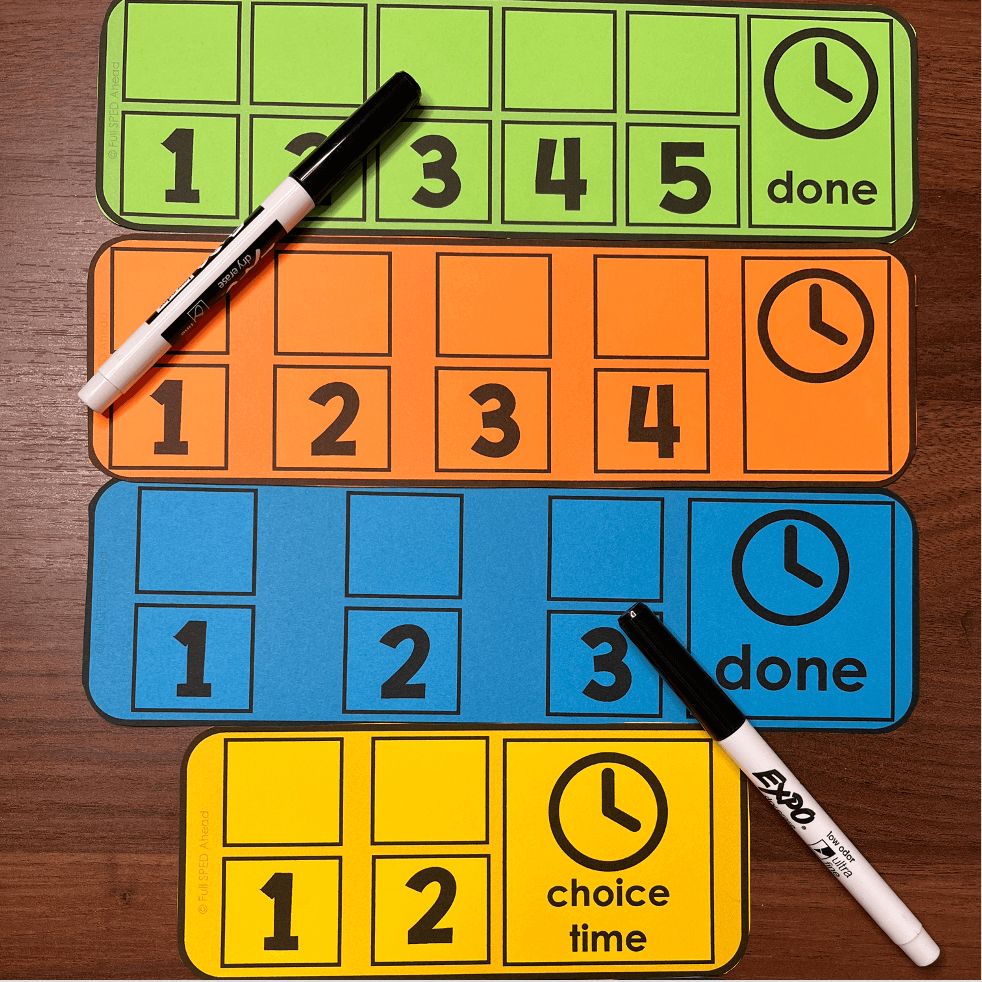We all love a good visual schedule, right? Visual mini schedules are one of the most powerful tools in our tool boxes as special education teachers, providing structure, predictability, and increasing independence for our learners. Visuals also decrease the cognitive load for our students, providing a prompt or cue that is permanently available—unlike a verbal direction that must be processed and remembered BEFORE being followed.

If you’re finding that a student (or group of students) is successful with a whole day visual schedule, but struggling during certain times of day, you may want to try a “schedule within a schedule” or a “mini schedule.” A mini schedule breaks one activity in your day into its routine parts, giving additional predictability and structure to one particular activity. This can be especially helpful for activities that include multiple parts.
I’ve used mini schedules for: circle time, small group time, mealtime routines, arrival and dismissal routines, and specials. Mini schedules are similar to a task analysis in that both break a routine or activity down into parts or steps, but a mini schedule doesn’t break the activity down into individual behaviors.
Mini schedules can also be used to help decrease task refusal behaviors. Many students struggle during small group work. Tasks may be challenging or non-preferred (or both!), and students may engage in many different types of task refusal behaviors to escape or avoid these tasks.
One easy intervention to try is offering choice—choice of tasks and/or choice of order of tasks completed. Choice is well-researched as an intervention and easy to implement in a variety of settings. All the tasks still get done, and the student has an opportunity to take some ownership of their learning and see that their voice has power.
A mini schedule can support choice as an intervention! To use a mini schedule in this way, create a visual to correspond with each task that should be completed during small group work. Pair each visual with the task by placing the visual on top of the task to ensure the student understands the meaning of each visual, as well as pairing with the verbal cue.
Ask the student, “Which one do you want to do first?” and wait for their selection. Place the visual at the top of the mini schedule. Repeat this process until all tasks have been chosen. Now you have a mini schedule to use with the student during small group work. As the student completes tasks, cue them to move the corresponding visual to an all done location if appropriate.
What are you looking for?
COPYRIGHT © 2025 Full SPED Ahead